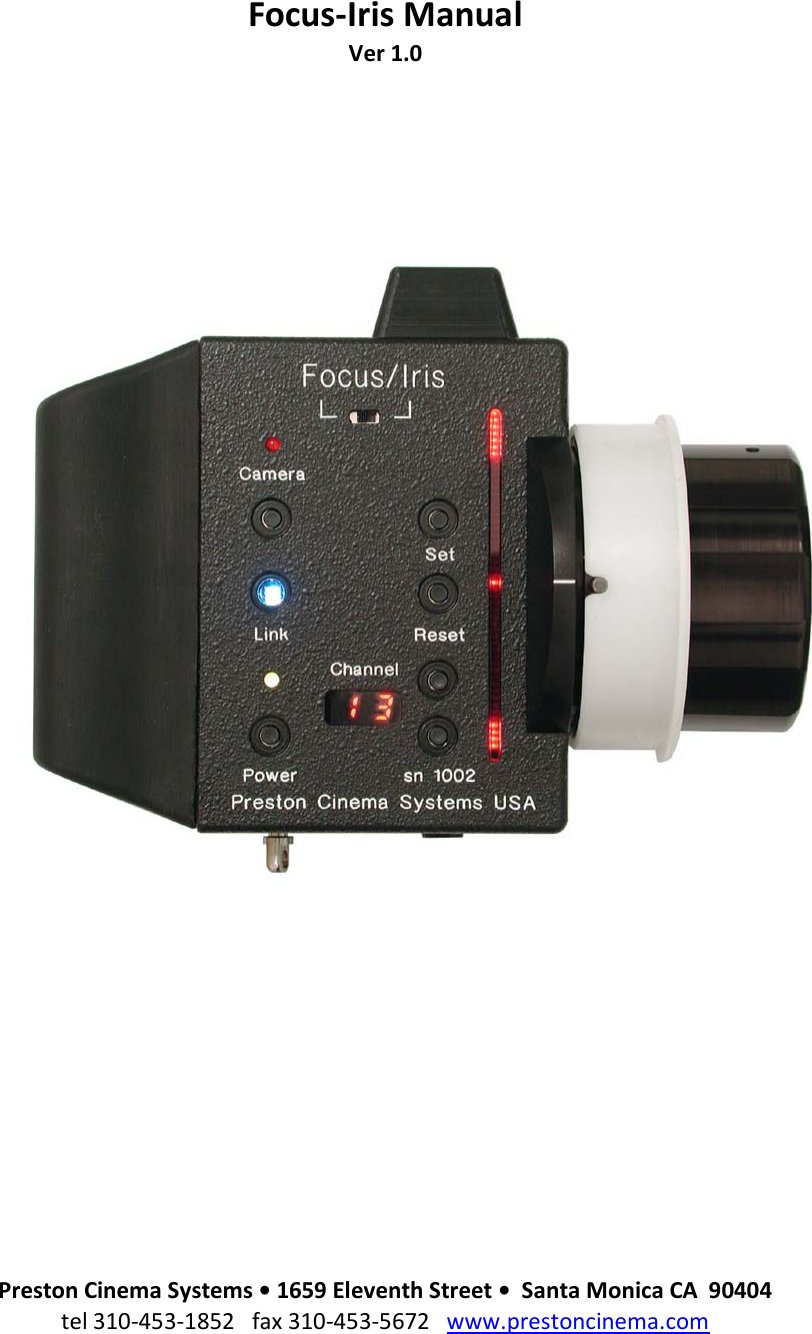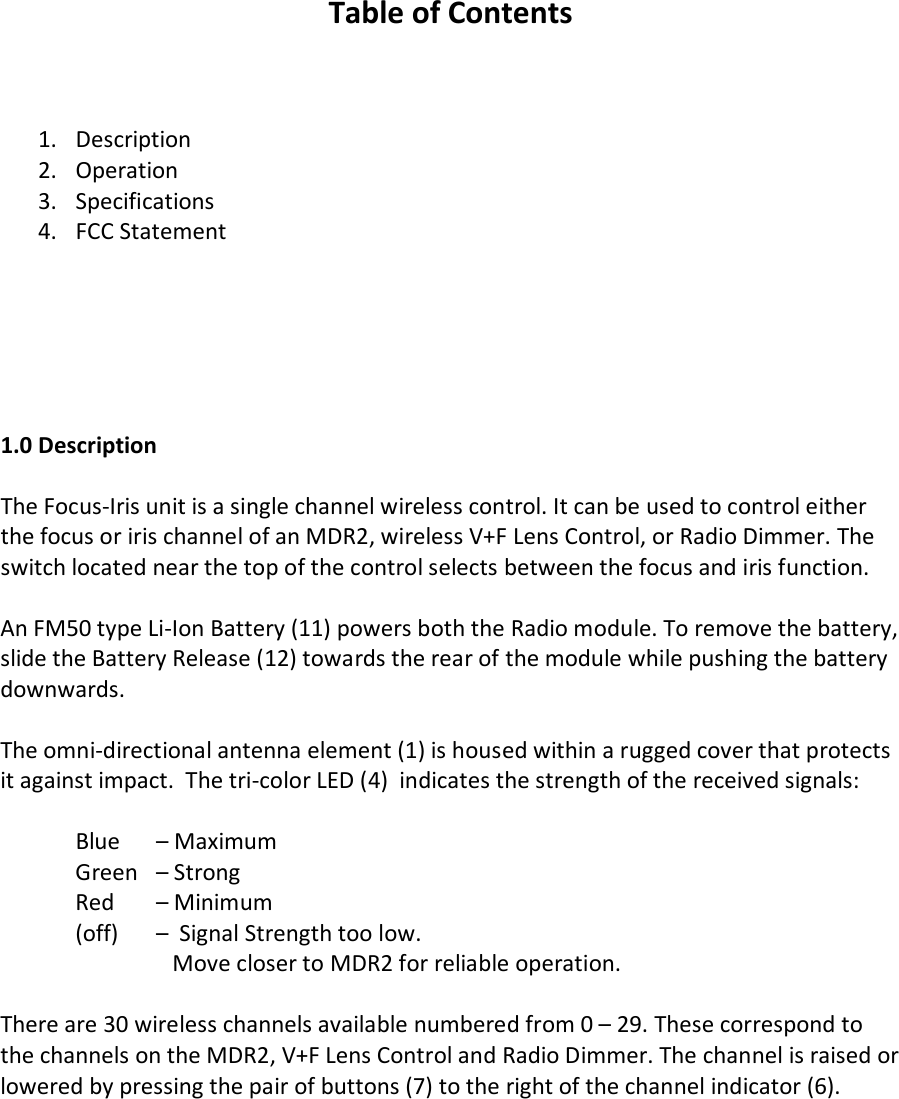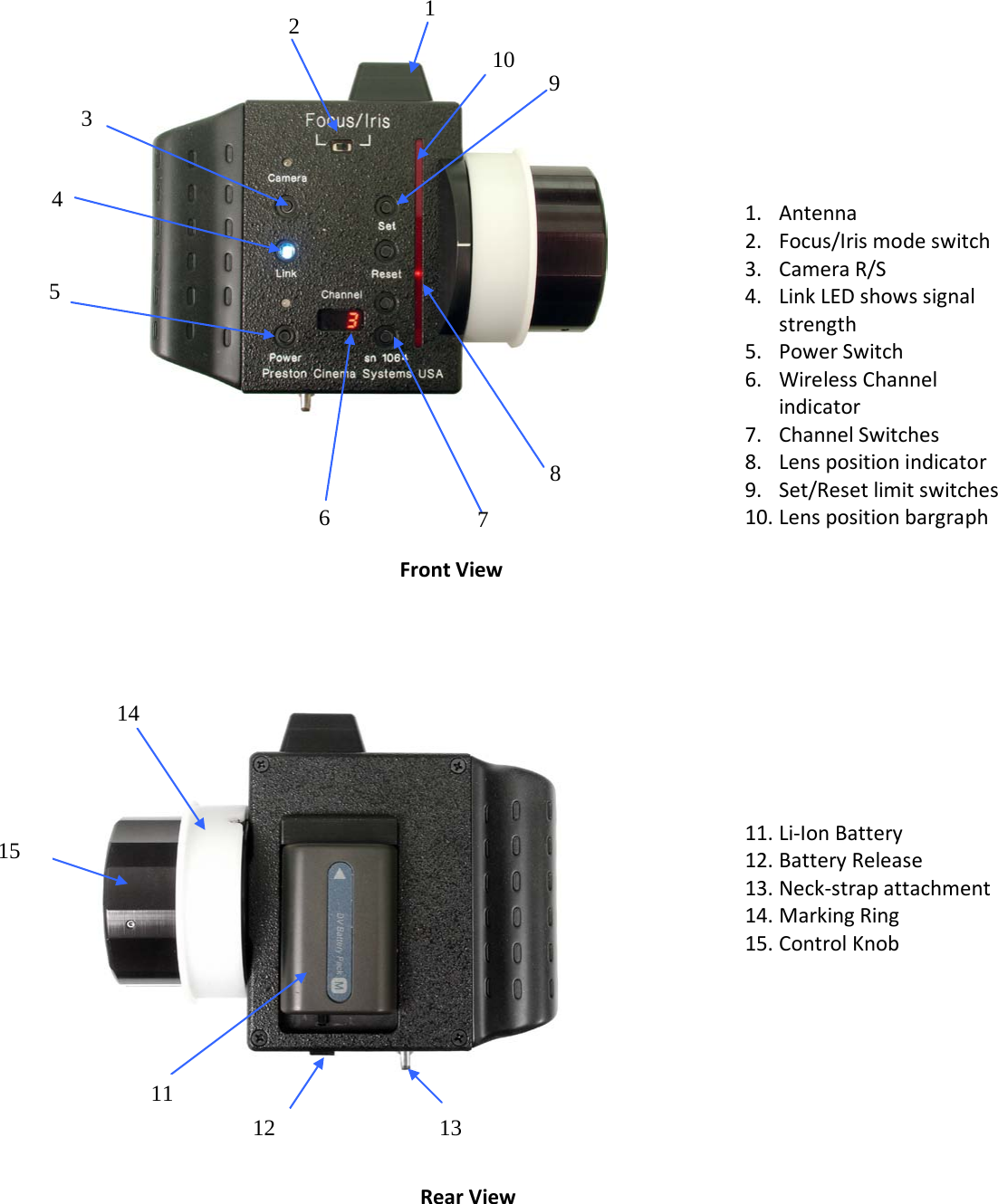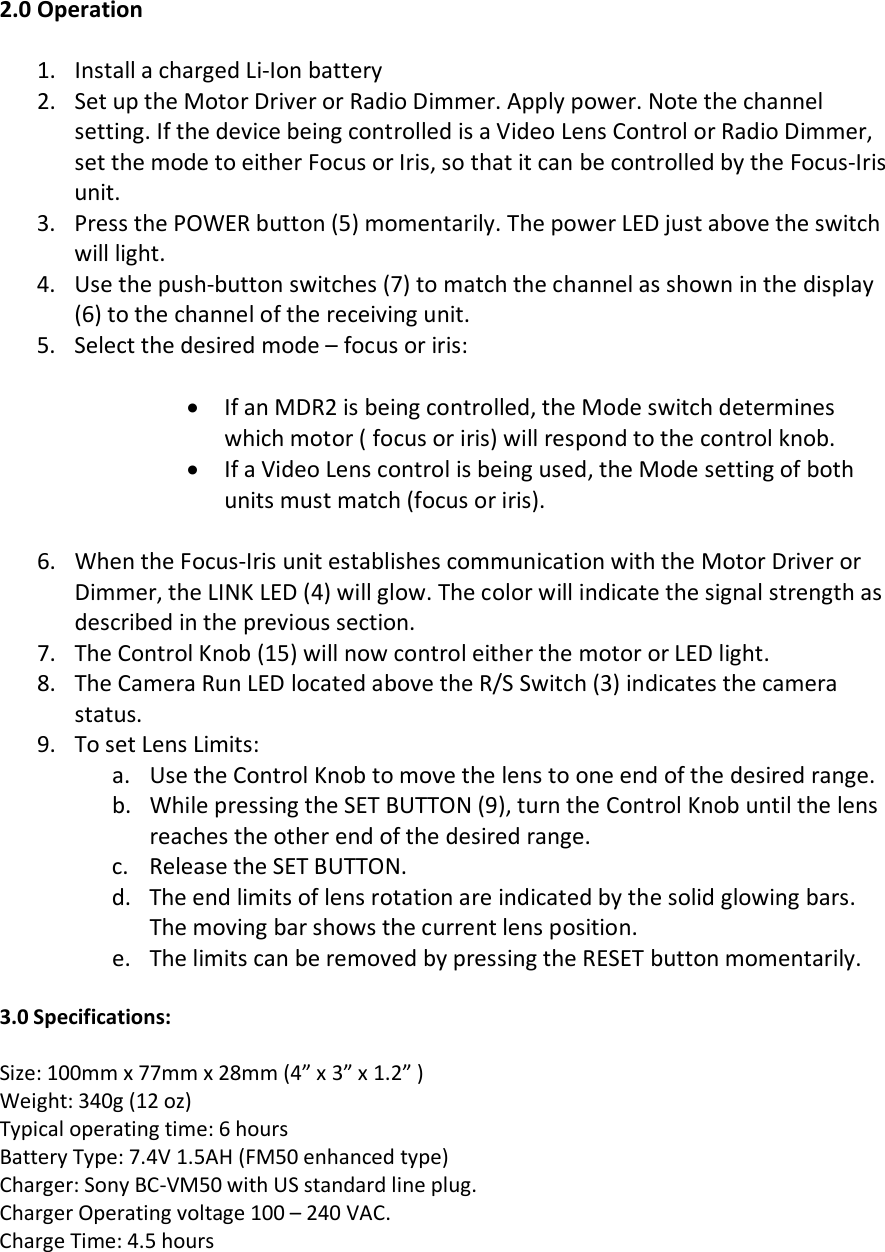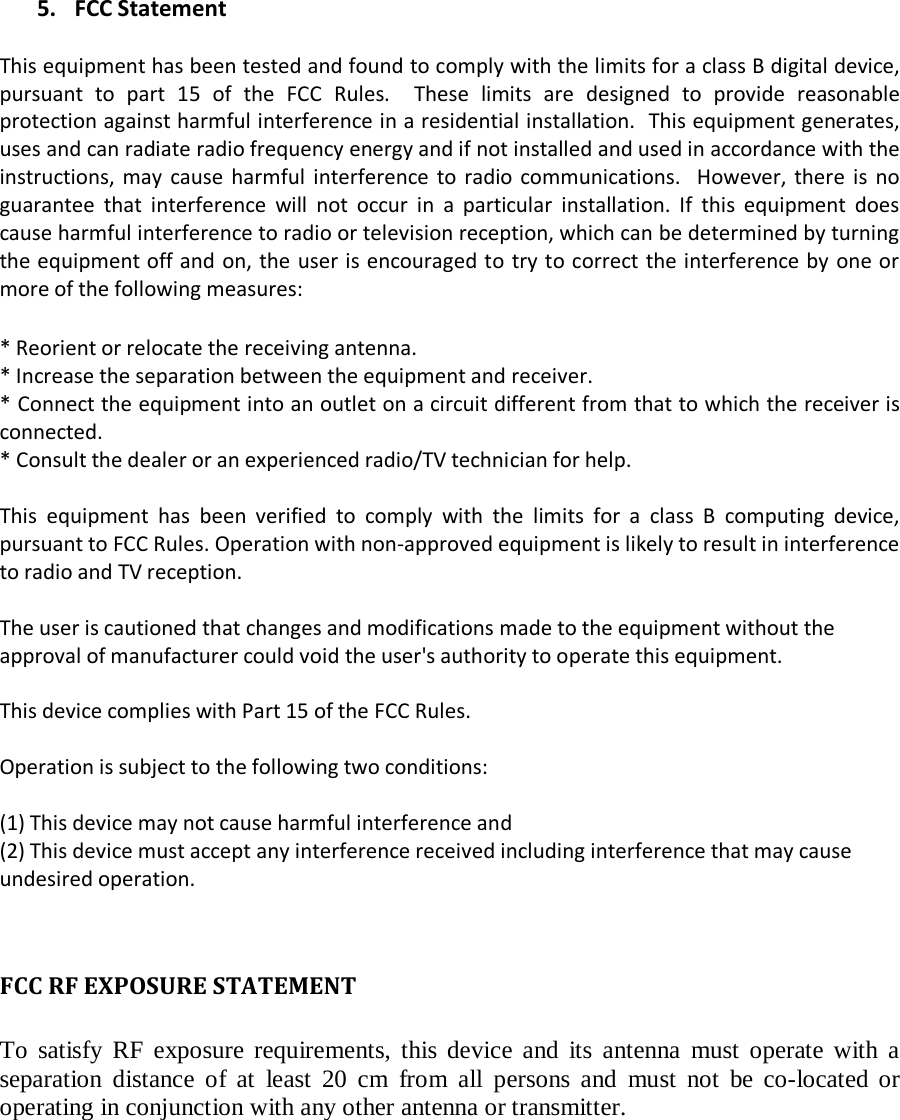Preston Cinema Systems TR4 2.4 GHz Transceiver Module User Manual Focus Iris Manual
Preston Cinema Systems Inc 2.4 GHz Transceiver Module Focus Iris Manual
Contents
- 1. Users Manual F IZ
- 2. Users Manual Focus IRIS
- 3. Users Manual VLC
- 4. Users Manual Radio Micro Force
- 5. Owners Manual OEM
Users Manual Focus IRIS
